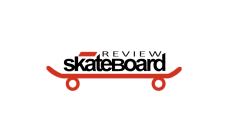September 14th, 2023
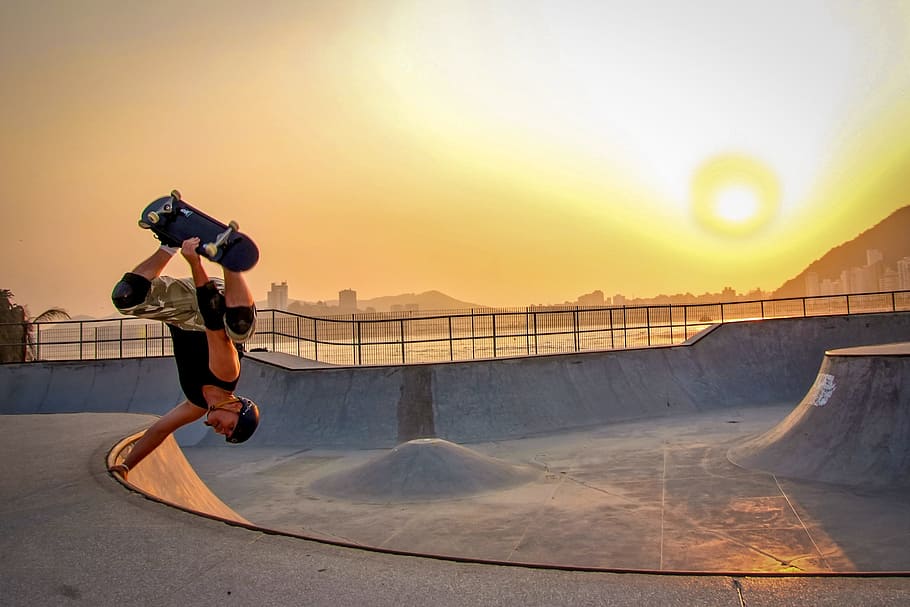
Skateboarding is a sport that requires a lot of skill, creativity, and personal preference. There is no one-size-fits-all answer to what size skateboards do pros use, as different skaters have different styles, preferences, and goals. However, there are some general guidelines and factors that can help you choose the best skateboard size for you.
In this article, we will explore what skateboards do pros use, what are the advantages and disadvantages of different skateboard sizes, and how to find the right skateboard size for your skating style and level. We will also compare some of the most popular skateboard brands and models that professional skaters use, and give you some tips on how to set up your own skateboard.
What are the Different Skateboard Sizes?
You know what? Multiple factors impact the size of the skateboard. It can either be the length, foot size, the width of the skateboard, shape and purpose they are required for.
The Role of the Width of the Skateboard
The most common way to measure a skateboard is by its width, which is the distance between the two edges of the board. Skateboard widths typically range from 7.5 inches to 8.5 inches, with some variations depending on the shape and style of the board.
The width of the skateboard affects how it feels and performs on different terrains and tricks. Generally speaking, narrower boards are easier to flip and maneuver, while wider boards are more stable and comfortable. The width of the board also depends on your shoe size, as you want to have enough foot space on the board without hanging over the edges.
The Role of the Length of the Skateboard
Another factor that affects the skateboard size is the length, which is the distance from the nose (front) to the tail (back) of the board. Skateboard lengths usually range from 28 inches to 32 inches, with some variations depending on the shape and style of the board.
The length of the skateboard affects how it balances and turns. Generally speaking, shorter boards are more responsive and agile, while longer boards are more stable and smooth. The length of the board also depends on your height, as you want to have enough room to stand on the board without feeling cramped or stretched.
The Role of the Shape of the Skateboard
The shape of the skateboard is another factor that affects its size and performance. Skateboards come in different shapes, such as popsicle, old school, cruiser, longboard, etc. The shape of the board determines its concave, which is the curvature of the board from side to side. The concave affects how the board grips your feet and how it flips and spins.
Generally speaking, deeper concaves provide more control and pop, while shallower concaves provide more comfort and smoothness. The shape of the board also determines its nose and tail, which are the curved ends of the board. The nose and tail affect how the board lifts off and lands on different tricks.
Hence, steeper noses and tails provide more leverage and height, while flatter noses and tails provide more balance and stability.
What Skateboards Do Pros Use?
Professional skaters have their own preferences and styles when it comes to choosing their skateboards. However, there are some common trends and patterns that can be observed among different pro skaters.
According to a survey conducted by Board of the World, a website that tracks what skateboards do pros use, these are some of the most popular skateboard brands and models among professional skaters in 2023:
1. Powell Peralta
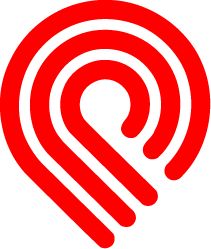 Powell Peralta is one of the oldest and most respected skateboard brands in the industry. Founded by legendary skater George Powell and artist Stacy Peralta in 1978, Powell Peralta has produced some of the most iconic skateboards and graphics in history. Some of their famous riders include Tony Hawk, Steve Caballero, Rodney Mullen, Ray Barbee, etc.
Powell Peralta is one of the oldest and most respected skateboard brands in the industry. Founded by legendary skater George Powell and artist Stacy Peralta in 1978, Powell Peralta has produced some of the most iconic skateboards and graphics in history. Some of their famous riders include Tony Hawk, Steve Caballero, Rodney Mullen, Ray Barbee, etc.
Powell Peralta is known for its innovative technology and quality materials. One of their most popular products is the Flight Deck, which is a carbon fiber reinforced deck that claims to be lighter, stronger, thinner, and longer lasting than a standard 7-ply maple deck. The Flight Deck comes in various shapes and sizes, ranging from 7.75 inches to 9 inches in width.
Some of the pro skaters who use Powell Peralta Flight Decks are:
1. Tony Hawk:
 Tony Hawk is arguably the most famous skater of all time. He is widely regarded as one of the pioneers and innovators of vertical skateboarding. He has won numerous competitions and awards, including 10 X Games gold medals. He is also known for his video game series Tony Hawk’s Pro Skater, which has sold over 40 million copies worldwide.
Tony Hawk is arguably the most famous skater of all time. He is widely regarded as one of the pioneers and innovators of vertical skateboarding. He has won numerous competitions and awards, including 10 X Games gold medals. He is also known for his video game series Tony Hawk’s Pro Skater, which has sold over 40 million copies worldwide.
Tony Hawk uses a Powell Peralta Flight Deck with a custom shape that he designed himself. His deck is 8 inches wide by 31.45 inches long, with a medium concave and a classic shape. He prefers a wider deck because it gives him more stability and control on ramps and bowls.
2. Steve Caballero:
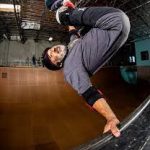 Steve Caballero is another legend of skateboarding. He is considered one of the best transition skaters of all time. He has invented many tricks, such as the Caballerial, the Half Cab, and the Cab Flip. He has also won several competitions and awards, including 5 X Games gold medals.
Steve Caballero is another legend of skateboarding. He is considered one of the best transition skaters of all time. He has invented many tricks, such as the Caballerial, the Half Cab, and the Cab Flip. He has also won several competitions and awards, including 5 X Games gold medals.
Steve Caballero uses a Powell Peralta Flight Deck with his signature shape and graphic. His deck is 8.25 inches wide by 31.95 inches long, with a medium concave and an old school shape. He likes a wider deck because it gives him more room to maneuver and land his tricks.
3. Ray Barbee:
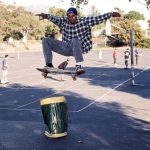 Ray Barbee is one of the most influential street skaters of all time. He is known for his smooth and stylish skating, as well as his musical talents. He has appeared in many videos and magazines, such as Ban This, Public Domain, and The Firm.
Ray Barbee is one of the most influential street skaters of all time. He is known for his smooth and stylish skating, as well as his musical talents. He has appeared in many videos and magazines, such as Ban This, Public Domain, and The Firm.
Ray Barbee uses a Powell Peralta Flight Deck with his signature shape and graphic. His deck is 8 inches wide by 31.45 inches long, with a mellow concave and a popsicle shape. He likes a medium-sized deck because it gives him a balance between stability and maneuverability.
2. Santa Cruz
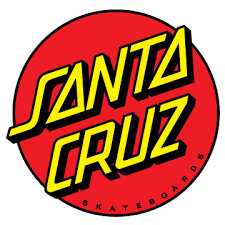 Santa Cruz is another legendary skateboard brand that has been around since 1973. Founded by Richard Novak, Doug Haut, and Jay Shuirman, Santa Cruz has produced some of the most iconic skateboards and graphics in history. Some of their famous riders include Rob Roskopp, Jason Jessee, Tom Knox, etc.
Santa Cruz is another legendary skateboard brand that has been around since 1973. Founded by Richard Novak, Doug Haut, and Jay Shuirman, Santa Cruz has produced some of the most iconic skateboards and graphics in history. Some of their famous riders include Rob Roskopp, Jason Jessee, Tom Knox, etc.
Santa Cruz is known for its quality and durability. One of their most popular products is the VX Deck, which is a 5-ply maple deck with two layers of carbon fiber that claims to be stronger, thinner, and lighter than a normal deck. The VX Deck comes in various shapes and sizes, ranging from 7.75 inches to 8.8 inches in width.
Some of the pro skaters who use Santa Cruz VX Decks are:
1. Eric Dressen:
 Eric Dressen is one of the most influential street skaters of all time. He is known for his fast and aggressive skating, as well as his tattoo art. He has appeared in many videos and magazines, such as Speed Freaks, Streets on Fire, and Thrasher.
Eric Dressen is one of the most influential street skaters of all time. He is known for his fast and aggressive skating, as well as his tattoo art. He has appeared in many videos and magazines, such as Speed Freaks, Streets on Fire, and Thrasher.
Eric Dressen uses a Santa Cruz VX Deck with his signature shape and graphic. His deck is 8 inches wide by 31.7 inches long, with a medium concave and a popsicle shape. He likes a medium-sized deck because it gives him enough pop and control for his tricks.
2. Tom Asta:
 Tom Asta is one of the best street skaters of today. He is known for his technical and consistent skating, as well as his video parts. He has won several competitions and awards, such as Street League Skateboarding and Battle at the Berrics.
Tom Asta is one of the best street skaters of today. He is known for his technical and consistent skating, as well as his video parts. He has won several competitions and awards, such as Street League Skateboarding and Battle at the Berrics.
Tom Asta uses a Santa Cruz VX Deck with his signature shape and graphic. His deck is 8 inches wide by 31.6 inches long, with a medium concave and a popsicle shape. He likes a medium-sized deck because it suits his skating style and level.
3. Emmanuel Guzman:
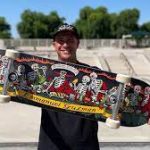 Emmanuel Guzman is one of the most versatile skaters of today. He is known for his powerful and creative skating, as well as his video parts. He can skate anything from street to transition to downhill. Emmanuel Guzman uses a Santa Cruz VX Deck with his signature shape and graphic.
Emmanuel Guzman is one of the most versatile skaters of today. He is known for his powerful and creative skating, as well as his video parts. He can skate anything from street to transition to downhill. Emmanuel Guzman uses a Santa Cruz VX Deck with his signature shape and graphic.
His deck is 8.25 inches wide by 31.8 inches long, with a medium concave and an old school shape. He likes a wider deck because it gives him more stability and speed on different terrains.
How to Choose the Right Skateboard Size for You?
As you can see, there is no definitive answer to what size skateboards do pros use, as different skaters have different preferences and styles. However, there are some general guidelines and factors that can help you choose the right skateboard size for you.
Consider the Shoe Size!
The first factor to consider is your shoe size. Your shoe size determines how much foot space you need on the board. You want to have enough foot space on the board without hanging over the edges. A good rule of thumb is to match your shoe size to the board width in inches.
For example, if you wear size 9 shoes, you should look for boards that are around 9 inches wide. However, this is not a strict rule, as some skaters prefer more or less foot space depending on their style and preference.
Consider the height!
The second factor to consider is your height. Your height determines how much room you need to stand on the board without feeling cramped or stretched. A good rule of thumb is to match your height to the board length in inches.
For example, if you are 5 feet tall, you should look for boards that are around 28 inches long. However, this is not a strict rule, as some skaters prefer more or less room depending on their style and preference.
Consider the Skating Style!
The third factor to consider is your skating style. Your skating style determines what kind of terrain and tricks you want to skate on and do. Different skateboards are designed for different skating styles, such as street, park, transition, downhill, etc. A good rule of thumb is to match your skating style to the board shape and concave.
For example, if you are a street skater who likes to do flip tricks and grinds, you should look for boards that have a popsicle shape and a medium to deep concave. However, this is not a strict rule, as some skaters prefer different shapes and concaves depending on their style and preference.
Consider the Skating Level!
The fourth factor to consider is your skating level. Your skating level determines how much experience and skill you have in skateboarding. Different skateboards are designed for different skating levels, such as beginner, intermediate, advanced, etc. A good rule of thumb is to match your skating level to the board quality and durability.
For example, if you are a beginner skater who is just learning the basics, you should look for boards that are cheap and easy to replace. However, this is not a strict rule, as some skaters prefer higher or lower quality boards depending on their level and preference.
How to Set Up Your Own Skateboard?
Once you have chosen the right skateboard size for you, you need to set it up with the right components and accessories. These include trucks, wheels, bearings, grip tape, hardware, etc. These components affect how your skateboard performs and feels on different terrains and tricks. However, you also have to consider your budget option!
Here are some tips on how to set up your own skateboard:
1. Trucks:
Trucks are the metal parts that attach the wheels to the board. They affect how your board turns and grinds. You want to choose trucks that match the width of your board, as well as your skating style and preference.
A good rule of thumb is to measure the distance between the innermost bolts on your board and compare it to the axle length of the trucks. You want the axle length to be within 0.25 inches of the board width. For example, if your board is 8 inches wide, you should look for trucks that have an axle length of 7.75 inches to 8.25 inches.
You also want to choose trucks that suit your skating style and preference. For example, if you are a street skater who likes to do technical tricks and grinds, you should look for trucks that are low or mid height, as they provide more responsiveness and clearance. However, if you are a transition skater who likes to skate ramps and bowls, you should look for trucks that are high or mid height, as they provide more stability and turn.
Some of the most popular skateboard truck brands are Independent, Thunder, Venture, etc.
2. Wheels:
Wheels are the rubber parts that attach to the trucks and roll on the ground. They affect how your board rides and slides. You want to choose wheels that match the diameter and durometer of your board, as well as your skating style and preference.
A good rule of thumb is to measure the diameter of your wheels in millimeters and compare it to the height of your trucks in inches. You want the wheel diameter to be within 2mm of the truck height multiplied by 10. For example, if your trucks are 2 inches high, you should look for wheels that are 52mm to 56mm in diameter.
You also want to choose wheels that suit your skating style and preference. For example, if you are a street skater who likes to do technical tricks and slides, you should look for wheels that are small (50mm to 54mm) and hard (99a to 101a), as they provide more speed and control. However, if you are a transition skater who likes to skate ramps and bowls, you should look for wheels that are large (56mm to 60mm) and soft (78a to 92a), as they provide more grip and smoothness.
Some of the most popular skateboard wheel brands are Spitfire, Bones, Ricta, etc.
3. Bearings:
Bearings are the metal parts that fit inside the wheels and allow them to spin smoothly. They affect how fast and smooth your board rolls. You want to choose bearings that match the quality and durability of your board, as well as your skating style and preference.
A good rule of thumb is to use the ABEC rating system to measure the quality and precision of your bearings. The ABEC rating system ranges from 1 to 9, with higher numbers indicating higher quality and precision. However, this is not a strict rule, as some skaters prefer different bearings depending on their style and preference.
Some of the most popular skateboard bearing brands are Bones, Bronson, Andale, etc.
4. Grip Tape:
Grip tape is the sandpaper-like material that covers the top of the board. It affects how your board grips your feet and how it flips and spins. You want to choose grip tape that matches the quality and durability of your board, as well as your skating style and preference.
A good rule of thumb is to use standard grip tape that covers the entire surface of the board. However, this is not a strict rule, as some skaters prefer different grip tape designs and patterns depending on their style and preference.
Some of the most popular skateboard grip tape brands are Mob, Grizzly, Jessup, etc.
5. Hardware:
Hardware is the metal parts that connect the trucks to the board. They affect how your board holds together and how it adjusts. You want to choose hardware that matches the quality and durability of your board, as well as your skating style and preference.
A good rule of thumb is to use standard hardware that fits the holes on your board and trucks. However, this is not a strict rule, as some skaters prefer different hardware sizes and colors depending on their style and preference.
Some of the most popular skateboard hardware brands are Independent, Diamond, Shorty’s, etc.
Conclusion
In conclusion, there is no definitive answer to what size skateboards do pros use, as different skaters have different preferences and styles. However, there are some general guidelines and factors that can help you choose the right skateboard size for you.
The main factors to consider are your shoe size, height, skating style, and skating level. These factors determine what kind of board width, length, shape, concave, quality, and durability you need. You also need to set up your board with the right components and accessories, such as trucks, wheels, bearings, grip tape, hardware, etc. These components affect how your board performs and feels on different terrains and tricks.
Remember that these are only general guidelines and not strict rules. The best way to find out what skateboard size works for you is to try out different boards and see what feels comfortable and fun for you.
